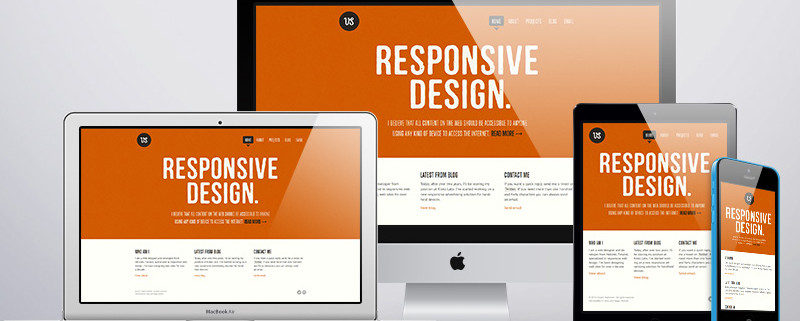Don’t Be Left Behind: The Importance of Responsive Design
The times of desktop dominance are over, mobile is now the digital leader. Studies show that smartphones and tablets today account for over 60% of time spent online. With mobile devices taking over our daily lives, that percentage will only continue to rise. This should be no surprise. Just look around and you’ll see how many people are glued to their phones. Now more than ever, it is crucial for your website to be designed on a platform capable of displaying your products or services to these people, these potential customers. If your website doesn’t work for them on your phone, your business doesn’t exist, sales are lost and you’re left behind.
It’s time to adapt. Responsive design is the answer. It’s not a trend, it’s a necessity. It doesn’t just mean that your site looks pretty on an iPhone or a tablet. When your website is built on a responsive design platform, your exact same content and images adjust fluidly across all devices and screen sizes. You can maintain one consistent, adaptive website instead of multiple versions of your information and SEO campaigns. It also allows your business to keep the same look, feel, and branding everywhere it’s seen. Ease of use on a mobile device has become an absolute expectation for customers these days. No one is going to endure zooming, pinching, and squinting their way through your website. The total browsing experience, easy navigation and superior usability of responsive design keeps them on your site instead of leaving out of frustration. Make it easy for them to do what you want them to do, and they will.
Beyond all the maintenance, flexibility and usability benefits, and maybe more importantly, is the SEO impact that is drastically improved by a site’s responsiveness. Keeping your website visible is vital. Simply, your website has to be easy to find when searched for. Google has established a clear stance on their search engine’s preference for responsive websites. Google says it’s more efficient to crawl and index your content when it’s in one place on one URL. Furthermore, Google gives advantage to sites that use CSS media queries defining the way the content renders on different mobile devices. These are both key features of responsive design.
With the abundance of future devices and constant innovations, from huge HD smart TVs to tiny screen wearables, responsive design is more important than ever. The digital environment is always developing and changing, your site needs to work with it. If you haven’t already taken the steps to get your website up to date, now is the time to change.




